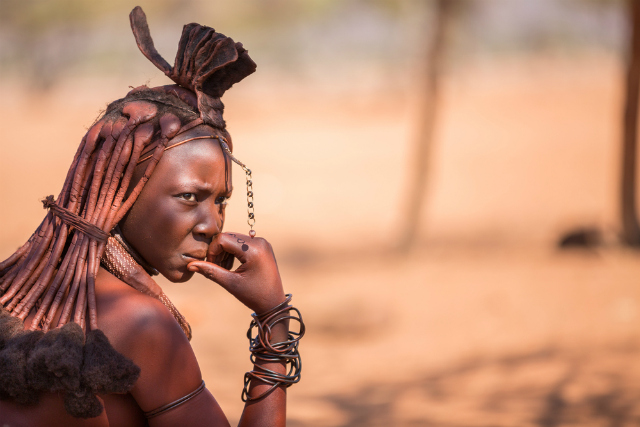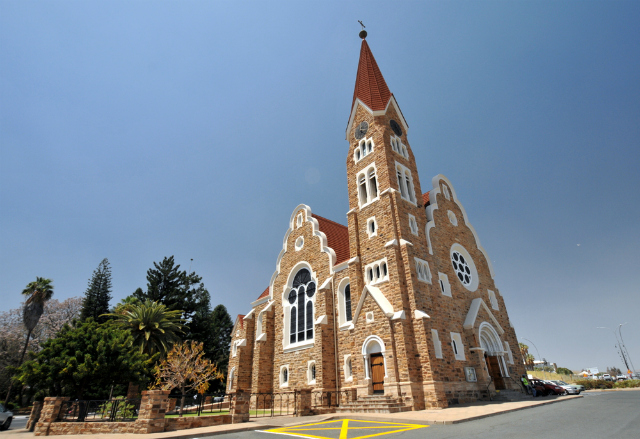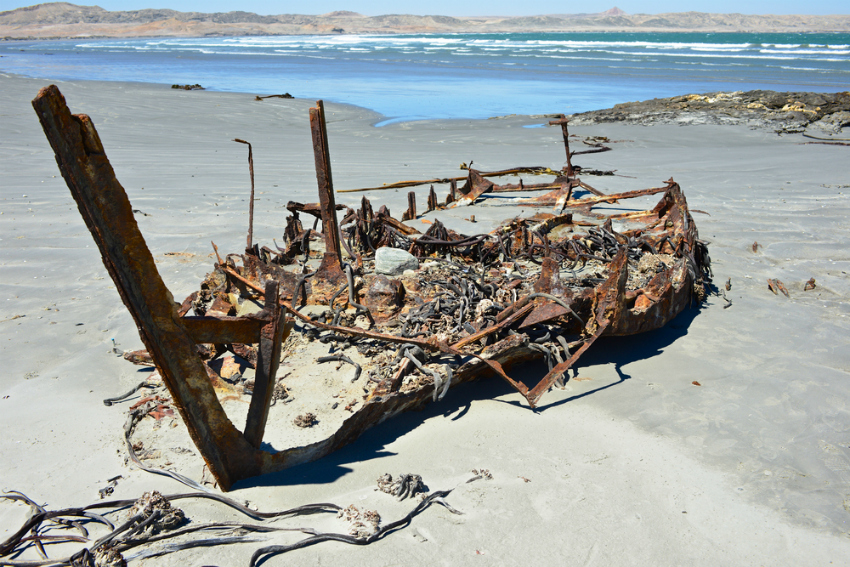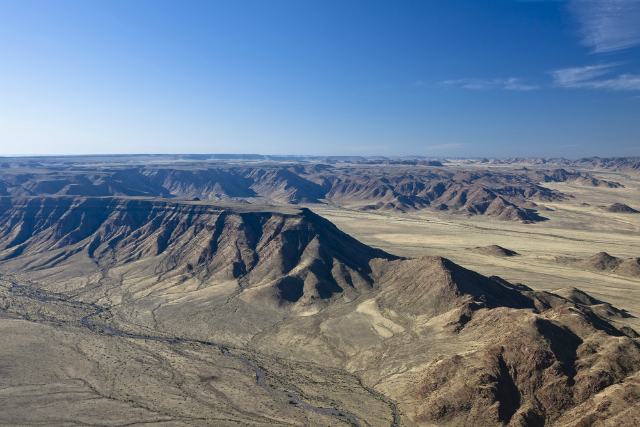The only thing small about Namibia is its population. Everything else — from the towering red dunes to the misty shrouded coastlines of shipwreck lore to the animals and adventure sports — is larger than life. Add this beautiful country, wedged between the Kalahari Desert and the chilly South Atlantic Ocean, to your bucket list. Here are 10 reasons to see Namibia before you die.
1. Sossusvlei
Despite being Namibia’s No. 1 attraction, Sossusvlei still manages to feel isolated. Hiking through the dunes — part of the massive sand sea that covers much of Western Namibia — is a hauntingly beautiful experience. The dunes, which reach as high as 900 feet, are part of one of Earth’s oldest and driest eco-systems. Try visiting at sunrise, when the colors are most dramatic.

(Digr/Wikimedia Commons)
2. Swakopmund
The small town of Swakopmund (Swakop to those in the know) in Western Namibia is the country’s adrenaline-sports epicenter. You can ski dive, sandboard or race ATVs across the dunes here. It’s also got some classic German-style architecture.
3. Etosha National Park
One of the world’s great wildlife-viewing venues, Etosha National Park gets its name — “Great White Place of Dry Water” — from the vast white and green-hued Etosha pan. The eastern part of the park is open to the public and the western portion is reserved for private tour operators. It is possible to drive through Etosha in a day, but most visitors stay at one of the three public rest camps.
4. Damaraland
Damaraland, the territory between the Skeleton Coast and Namibia’s central plateau, is named for the Damara people who populate it. Here the red sands are interspersed with mountains and plains of gravel, and the land is home to desert-adapted species including giraffes, zebras, elephants, lions and even black rhinos. The area is also home to the Himba people.
5. Zambezi Region
Once known as the Caprivi Strip, the narrow panhandle that borders Angola, Zambia and Botswana has been renamed the Zambezi Region because the mighty river cuts through it. Whatever you call it, this area is a beguiling, off-the-beaten-path destination teeming with wildlife and well worth exploring. The numerous parks and reserves include Caprivi Game Park, Mudumu National Park, Mamili National Park, Salambala Conservancy and the river-adjacent Kasika Conservancy.
6. Windhoek
Namibia’s small German-flavored capital, Windhoek, is one of Africa’s easiest major cities to acclimate to. It’s laid-back and small. At an elevation of 1660 meters, surrounded by low green hills and blessed with dry clean air and a healthy highland climate, the city is at the crossroads of the country. You will most likely pass through it during your travels.
7. Southern Africa’s oldest tribes
It’s generally accepted that Southern Africa’s earliest inhabitants were the San, nomadic hunter gatherers able to adapt to even the severest terrain. The descendants of the San people still live in Namibia today, although few have maintained the traditional lifestyle.
8. Skeleton Coast
Skeleton Coast is the name of Northern Namibia’s treacherous coastline, which has long been a graveyard for unwary ships and their crews. On land, is one of the world’s most inhospitable and waterless areas, a place where white gravel plains and colorless dunes meet the cold, misty waters of the Atlantic Ocean.
9. Naukluft Mountains
Rising steeply from the gravel plains of the central Namib Desert, the Naukluft Massif is a high-plateau area cut around the edges by a complex of steep gorges. It is an ideal habitat for mountain zebras, kudus, leopards, springboks and klipspringers, and popular with hikers. Try the Waterkloof or Olive trails.
10. Fish River Canyon National Park
Namibia’s Fish River Canyon is a unique site. The Fish River, which joins the Orange River at the mouth of the canyon, has been gouging out this gorge for millennia and the results are both dramatic and enormous — kind of like Africa’s version of the Grand Canyon.
Want to discover the finer side of Africa? Sign up for our weekly newsletter.









